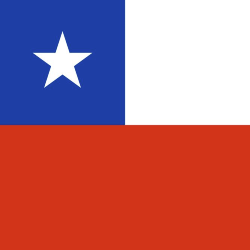Trump and the Conservative U.S. Counter-Revolution
Photograph Source: Xuthoria – CC BY-SA 4.0
“Nearly every federal agency in the US government could fall under the scrutiny of DOGE”. With these words on Fox News on February 7th, Donald Trump outlined the scope of DOGE – the Department of Government Efficiency – his administration’s planned overhaul of federal institutions, with Elon Musk at its helm. Within days, the administration has moved to consolidate control over key security apparatus, with the Senate confirming former Democrat turned Trump loyalist Tulsi Gabbard as director of national intelligence and Kash Patel, author of “Government Gangsters,” as FBI director[1]. Democratic Senator Chris Murphy characterized these developments as “the most serious constitutional crisis the country has faced certainly since Watergate,” warning of a “billionaire takeover of government.”[2]
Yet this radical transformation of American governance, far from being an impromptu imitative, represents the culmination of nearly a century of meticulously laid groundwork by conservative elites. Drawing from the previously unexplored McCune archives at Columbia University (NY), this investigation reveals how, since the 1930s, a powerful alliance of industrialists, conservative foundations, and far-right ideologues has progressively worked to infiltrate institutions, reshape governmental structures, and neutralize democratic opposition.
Donald Trump’s inauguration in January 2025 marks the culmination of this counter-revolutionary project, with an unprecedented offensive aimed at dismantling the traditional federal administration in favor of a streamlined structure populated by his loyalists. Recent analyses have begun to grapple with this transformation of American governance from different angles. In their February 2025 Foreign Affairs piece “The Path to American Authoritarianism” Steven Levitsky and Lucan A. Way notably highlight how the Heritage Foundation has invested millions to prepare “an army of up to 54’000 loyalists to fill government positions.”[3] While their analysis astutely identifies mechanisms of state capture, it perhaps underestimates how wealth concentration and corporate influence have historically enabled rather than resisted democratic erosion. Similarly, Mike Brock’s investigation “The Plot Against America” (February 2025) reveals how contemporary tech elites are working to shift power “from democratic institutions to technical systems controlled by a small elite.”[4] Yet these vital contemporary accounts capture only the latest chapter of a much longer historical process, one whose roots stretch back nearly a century.
Wesley McCune’s work provides an indispensable historical record of Trump’s actual counterrevolution effort, through his founding of Group Research Inc. (GRI) in 1962. Prior to establishing GRI, he had served in several government agencies and as assistant to both the Secretary of Agriculture and President Truman (1945-1952). Under his leadership, the GRI compiled the largest documentary collection ever assembled on conservative networks and their funding[5]. These archives expose, through thousands of pages of evidence, how the conservative and fundamentalist Christian right methodically worked to infiltrate institutions, reshape governmental structures, and neutralize democratic opposition – prefiguring with remarkable accuracy the very transformation we are witnessing today[6].
A strategy Decades in the Making
The roots of this counter-revolution can be traced back to the 1930s. In reaction to Franklin D. Roosevelt’s New Deal, influential industry captains from the banking, chemical, and steel sectors perceived state intervention as an existential threat. Their opposition crystallized around major figures: Alfred P. Sloan (president of General Motors) and Irénée DuPont (Arms and Powder manufacture), who became the principal architects of the “American Liberty League” in August 1934[7]. Their design was unequivocal: they promoted a model, inspired by fascisms in Europe, where the United States would be governed according to a corporatist and non-democratic logic, under the guise of “deregulating” the economy[8].
This vision quickly found concrete expression in an attempted coup that presaged the League’s formal establishment[9]. In his testimony before the McCormack-Dickstein Committee during a secret executive session in New York City on November 20, 1934, General Smedley Butler exposed what became known as the “Business Plot” – a failed conspiracy by wealthy industrialists to overthrow President Roosevelt. The plotters, who ironically styled themselves as a “Society to maintain the Constitution”, had envisioned installing a “Secretary of General Affairs” who would effectively usurp the President’s executive powers under the guise of administrative efficiency[10]. While the coup attempt failed, these same industrialists quickly redirected their efforts toward institutional capture, manifesting their financial power in the creation of numerous foundations aimed at implementing their vision of societal restructuring[11].
The post-war period ushered in an acceleration of this program[12]. A network of entrepreneurial foundations – Mellon, Scaife, Lilly and Richardson, Olin, supported by the DuPont and Koch dynasties – orchestrated an unprecedented effort to undermine the federal state structure, operating under the cover of Cold War anti-communist polices initiated immediately after the war[13]. These foundations established and solely funded dozens of political and research institutes, enabling them to obtain intellectual legitimacy for their political-economic vision[14]. This influence remains pervasive today through these still-active institutions and their successors, as illustrated by Timothy Mellon’s $50 million support to Trump’s Super PAC, revealed by the press in 2024[15].
This design first materialized through the creation of the American Enterprise Association (AEA) in 1943, which would later become the American Enterprise Institute (AEI) in 1962. That same year, the AEI spawned one of its key affiliates: the Center for Strategic and International Studies (CSIS) at Georgetown University (Washington)[16]. A decade later, the Heritage Foundation (1973) emerged, backed by resources from the J. Coors conglomerate, the Scaife Family Trust, the Noble Foundation, and the John M. Olin Fund.
The far-right John Birch Society (JBS), founded in 1958, served as a catalyst for the radicalization of the conservative base by cultivating populism as an essential ingredient of this long-planned revolution[17]. As historian Matthew Dallek’s work demonstrates, the JBS through its media network and forums led by Fred Schwartz and Clarence Manion (The Manion Forum), would find its contemporary echo in Alex Jones “Infowars” channel, an early Trump supporter. This progression shows how extremism became increasingly mainstream within conservative circles[18]. These networks successfully nurtured and sustained an ultranationalist momentum built on victimhood narratives that aligned with white nationalist and supremacist ideologies. This movement laid the groundwork for what........






















 Toi Staff
Toi Staff Tarik Cyril Amar
Tarik Cyril Amar Jeffrey Bernstein Ph.d
Jeffrey Bernstein Ph.d Gideon Levy
Gideon Levy Maryam Aldossari
Maryam Aldossari Sabine Kinkartz
Sabine Kinkartz Jennifer Gerlach Lcsw
Jennifer Gerlach Lcsw Andrew Mitrovica
Andrew Mitrovica Tafi Mhaka
Tafi Mhaka Belen Fernandez
Belen Fernandez Maximilian Hess
Maximilian Hess Leonid Ragozin
Leonid Ragozin
